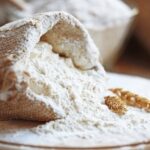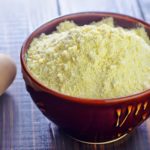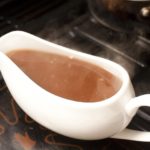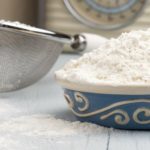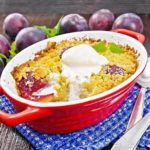Scales are by far the most accurate measuring tools in the kitchen, but they’re not always available.
If you need to measure out 100g of flour without scales, there are four alternative methods you can use.
With a bit of ingenuity and concentration, you’ll be able to accurately measure different amounts of flour in seconds, with no special equipment or techniques needed.
1. Measure 100g of Flour with a Measuring Jug or Measuring Cup
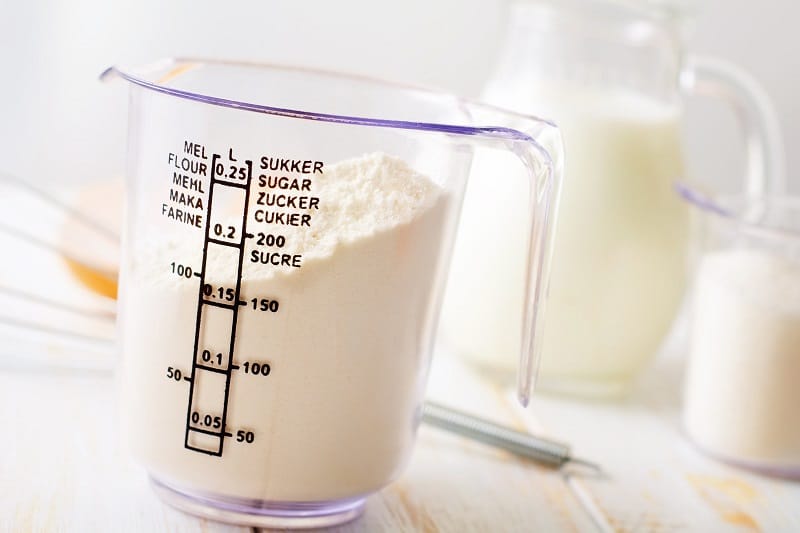
Using a measuring cup, measuring jug or similar to measure flour can be almost as quick and easy as using kitchen scales.
A measuring jug (also known as a measuring cup, measuring beaker or by the brand name Pyrex®) is the most accurate way to measure 100g of flour without scales.
Measuring jugs have graduated markings on their sides, showing you how much liquid or solid is inside of them. You may need to convert between litres, grams, ounces and other measuring systems.
100g of flour is equal to roughly 190 ml, so you can use the milliliter markings on the measuring jug to measure the flour.
As long as your flour is as flat as possible when you take the measurement, you should be able to measure pretty close to 100g.
2. Use Flour Bags to Measure Flour
Before looking any further, take a look at the packaging of your flour.
A standard size of flour in the UK and abroad is 1000g (1kg). Many brands print handy 100g measurement markings onto their bags of flour.
By placing the bag on a flat surface (to level the flour inside) and comparing it to these measurements, you can weigh out flour with fairly good accuracy.
3. Use a Ceramic Mug as a Measuring Device
Mugs come in thousands of different designs, but almost all ceramic mugs and cups share the same standard dimensions.
Two common mug sizes are 11 oz (short, cylinder-shaped mug with a flat base) and 15 oz (larger, with a slightly larger handle and a slightly rounded base).
It may seem counterintuitive, but 100g of flour takes up less space than 100g of other solids, like granulated sugar or rice for example. This is because the tiny grains of flour can fit closer together, leaving fewer gaps for air to become trapped.
Ensuring that your flour is airy and not compacted or lumpy, you’ll be able to accurately measure out a known amount of flour using a mug.
An 11oz mug will hold 165g grams of flour while a 15oz mug will hold 443g of flour. On average, 1ml of all-purpose flour weighs 0.53g.
You don’t have to use mugs or cups to do this. You can find the dimensions of practically every kitchen item you own online and work out how much flour they can hold using the conversion above.
4. Guessing 100g Flour
If you’ve used flour before, while baking or cooking, you could just guess how much flour 100g looks like.
Of course, this is the least accurate method to measure flour without scales. But if you’re somewhat confident in the kitchen, or if accuracy isn’t an issue, using your intuition to weigh out flour could be a viable alternative to using scales.

Chef’s Pick is your guide to the best kitchen equipment and appliances in the UK.
We help you understand the confusing world of cookers, ovens and cookware so you can get the most out of your kitchen.


